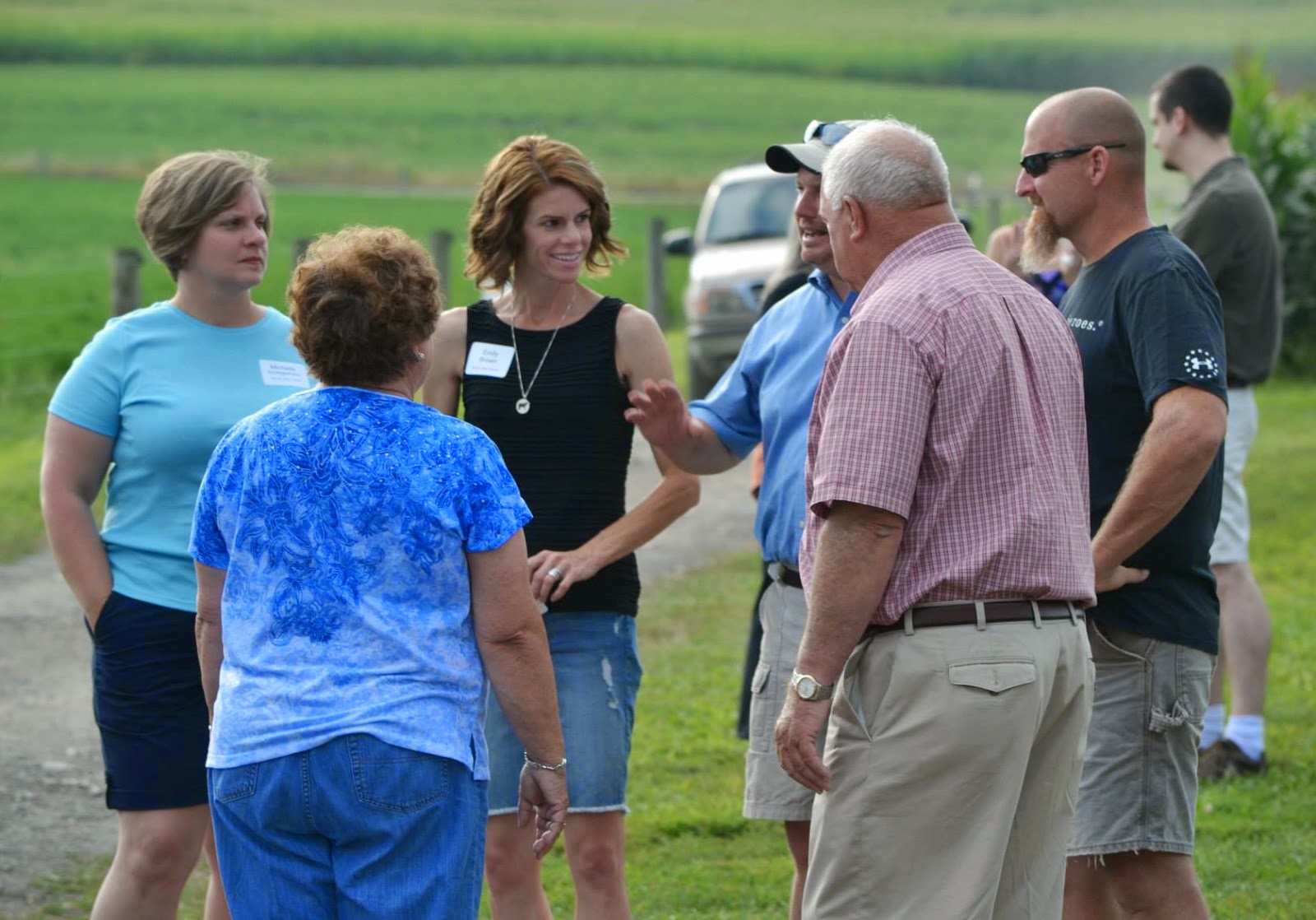Before the sun clears the trees there is an autumn chill in the air and the bees looked cold and clustered this morning when I opened the top to remove some empty feeding jars. I tipped the hives gently and they felt good and heavy. They ought to be. Neither colony put away honey this summer, but in the past few weeks I have fed 120 lbs of sugar to them in the form of heavy syrup.
I looked over the late remnants of my garden - an abundant crop of green tomatoes that will never ripen now, I fear. Nearly all of my other vines have long since withered, but the deer kept this one pruned most of the summer, which seems to have made it green and vigorous. A little garter snake was there glistening in the sun, but clearly he's not keeping enough of the slugs at bay.
 |
| withered brown-eyed susans |
More of the Thai peppers are still ripening. I already have a hot sauce in the cupboard and there should be enough to experiment with another and still have peppers left over for the winter's kimchi. One of my few successful crops this neglected summer. That and peppermint. I have three quart jars full of dried peppermint for making tea. A bit of sage, basil and oregano dried as well.
The fall greens are doing well, though the grasshoppers are starting to hit them hard. Maybe that will finally motivate me to take the butterfly net and harvest some to toast up. They scatter with every step in the un-mown grass.
I pulled apart an empty beehive that I had left to sit all summer, and of course half the comb was wrecked by mice and moths and the rest was inhabited by spiders and earwigs. I set it all in the sun in case any birds or wasps wanted to help me clean it out. The phoebes and a family of bluebirds were lingering here last week, but I think they have moved on.
Ducking back inside, I put myself on a half-hour timer on the laptop, so I wouldn't while away too much of a pretty day. Catching up on the too-many blogs I read, writing on my own, checking the news. I added my two cents to an Ebola thread at the
Archdruid Report.
I helped Nico pack for his school trip this week. They'll be in Washington DC from Monday to Thursday. I got him oriented on our little point-and-shoot camera. Through the window he spied fat wood frog trapped in a bucket of rain water and went out to free it.
 |
| small milkweed bug nymphs congregating |
Afterward I walked into the woods in search of
hen-of-the-woods, but it's been a dry year and fungi were few. I didn't see any of my quarry, but I also saw no tell-tale signs of any being harvested. Either they are late or not fruiting this year at all. The nuthatches and titmice were in an uproar about something.
On my laptop I listened to most of the early football game. Sometimes I'll go in to Westerly to watch a game at the bar, but I find I'm just as happy to putter while I listen. My shop was all sawdust and chaos, so I brought some order to it. And my team won.
No birds were helping clean out the beehive, so I settled down in the grass with my hive tool and began scraping and cutting. I had gone to a biodynamic beekeeping workshop yesterday put on by
Gunter Hauk. I take his Rudolf Steiner mumbo jumbo with a grain of salt, but I'll listen to any beekeeper with 40 years of experience, and Herr Hauk is clearly a thoughtful and observant bee man. As I snipped and pulled old comb out of the frames, I considered which of his techniques I'd adopt. Doing without foundation, for one. I'd reassemble these frames without wired foundation, or rather just a little starter strip at the top. Raising my own queens obviously. But for that I need to get these colonies through the winter. Formic acid treatments for varroa mites, certainly. Making a charm out of varroa mite ash and using dowsing to inquire into the hives? not so much. The next time I have to feed sugar, I'll use his recipe and mix in some of their honey and some chamomile.
 |
| small milkweed bugs |
I took the old comb over to the fire circle, which reminded me that I have been meaning to clear the ash out, since it is beginning to form a bit of a mound. I dug out three wheelbarrow loads and shoveled them onto the big hugelkultur, which has been swallowed by vetch. I figure winter rains will wash the ash and charcoal down into the body of the hugel. In the spring I'll cover it with more dirt from somewhere and plant on it.
I need to finish digging out the last of my paltry potato crop and ready a bed for planting garlic. I need to stack three cords of wood that are sitting in a pile and put on the storm windows. I'll get to it. Now it's time to write in my journal and toast the year's impending dormancy with a glass of whiskey.
UPDATE: in an early version I had mislabeled these insects as boxelder bugs, but a reader pointed out that they seem to be small milkweed bugs instead.













.jpg)


.jpg)


























